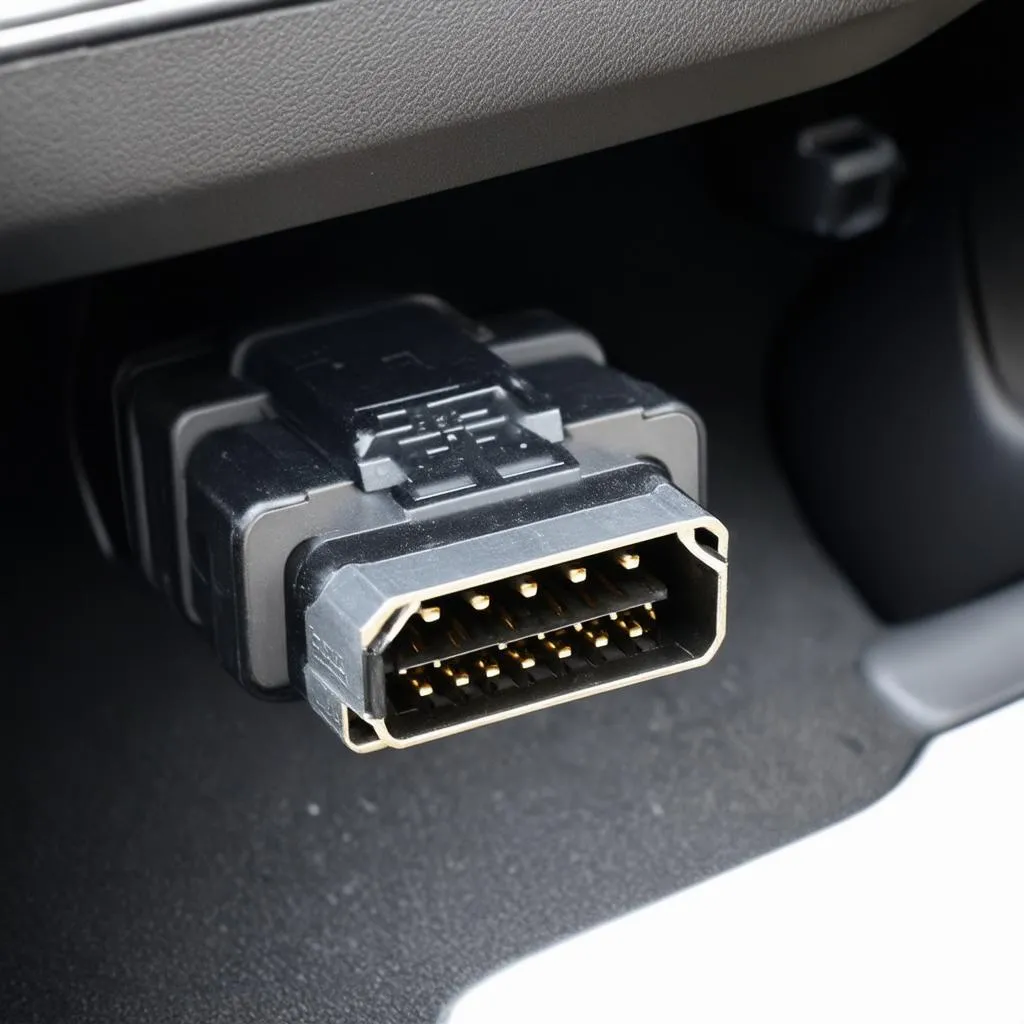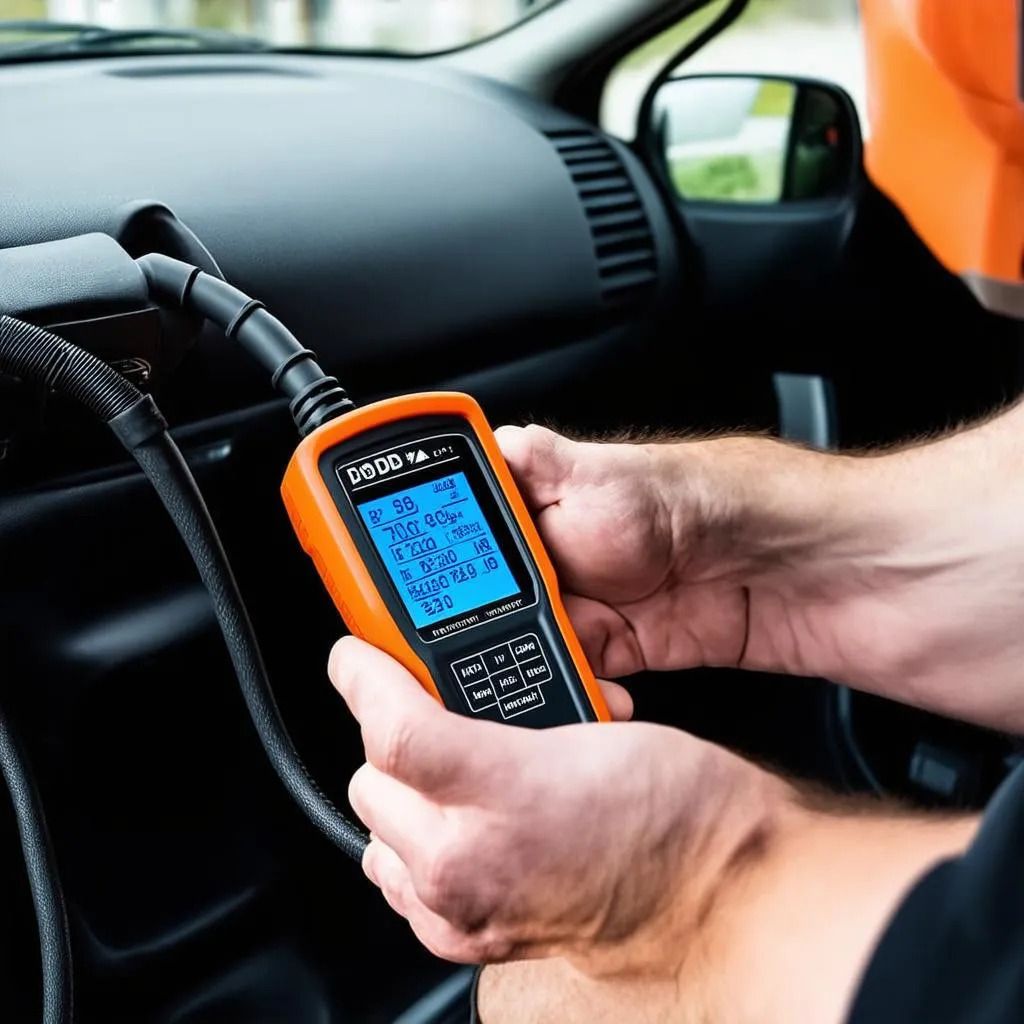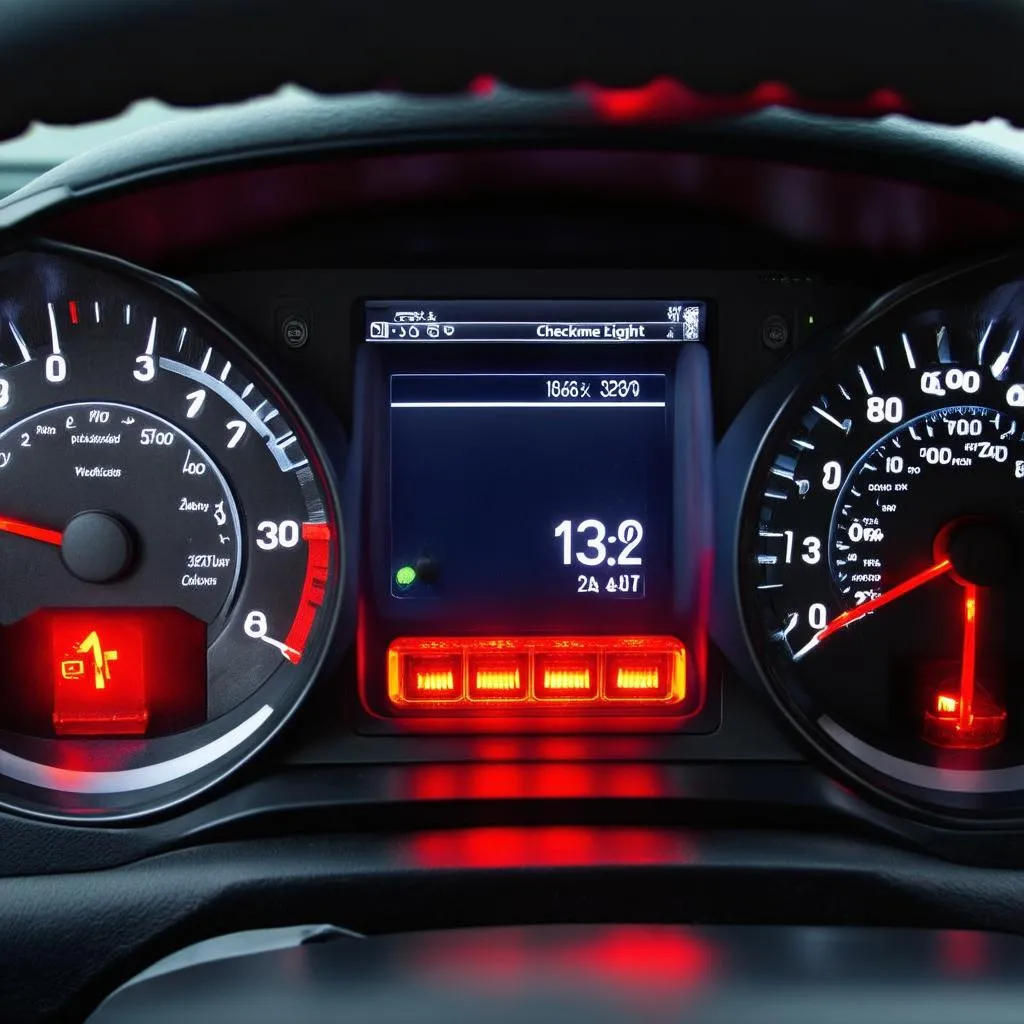Have you ever wondered what secrets your car holds within its electronic heart? The answer lies in the OBD port, a gateway to a world of diagnostic information that can help you understand your car better and keep it running smoothly.
What is the OBD Port and Why is it Important?
The OBD port, short for On-Board Diagnostics, is a standardized connector located in your car’s passenger compartment. It’s a vital tool for mechanics and car enthusiasts alike, providing access to a wealth of data about your vehicle’s performance, emissions, and potential problems.
Think of the OBD port as a window into your car’s brain. Just like a doctor uses medical instruments to diagnose a patient’s illness, mechanics and tech-savvy individuals use OBD scanners to diagnose car problems.
Why You Should Care About Accessing Diagnostics Through the OBD Port
There are many reasons why accessing diagnostics through the OBD port is important:
- Early Problem Detection: It allows for early detection of potential issues before they escalate into major repairs, saving you time, money, and stress.
- Enhanced Safety: A well-maintained car is a safer car. Accessing diagnostics can help identify issues that may compromise your safety.
- Increased Efficiency: Diagnosing and fixing issues promptly can improve your car’s fuel efficiency and overall performance.
- DIY Troubleshooting: For tech-savvy individuals, OBD scanners can be a valuable tool for DIY troubleshooting and understanding your car’s inner workings.
How to Access Car Diagnostics Through the OBD Port
Accessing car diagnostics through the OBD port typically involves using a specialized tool called an OBD scanner. These scanners come in various forms, from basic code readers to advanced diagnostic tools. Here’s a basic breakdown of the process:
- Locate the OBD Port: This is usually found under the dashboard on the driver’s side, near the steering column.
- Connect the OBD Scanner: Plug the scanner into the OBD port.
- Power On the Scanner: Turn on your scanner and follow its instructions.
- Read the Diagnostic Codes: Most scanners will display diagnostic codes that indicate potential issues. You can use online resources or a repair manual to decipher these codes.
Unlocking the Mysteries of Your Car with OBD Scanners: A Digital Detective’s Guide
The ability to access diagnostics through the OBD port empowers you to be a more informed car owner. It’s like having a digital detective’s toolkit at your disposal, enabling you to identify and address problems before they become major headaches.
Think of it this way: Your car’s computer system is constantly generating diagnostic codes, much like a detective gathering evidence in a case. These codes can indicate issues with your engine, transmission, air conditioning system, and more. By using an OBD scanner, you can gain access to this valuable information, allowing you to become a proactive car owner.
Common Diagnostic Codes and Their Meanings
Here are some common diagnostic codes and what they may mean:
P0171: Fuel System Too Lean
P0300: Random/Multiple Cylinder Misfire Detected
P0420: Catalyst System Efficiency Below Threshold (Bank 1)
P0500: Vehicle Speed Sensor Malfunction
Remember: If you’re not familiar with OBD codes, it’s always best to consult a qualified mechanic for diagnosis and repair.
Choosing the Right OBD Scanner: Navigating the World of Diagnostic Tools
The world of OBD scanners is as diverse as the vehicles they service. From simple code readers to advanced diagnostic tools, the choice can be overwhelming. Here are some factors to consider when selecting an OBD scanner:
- Compatibility: Ensure the scanner is compatible with your vehicle’s make, model, and year.
- Features: Consider the features you need, such as live data readings, code clearing, and advanced diagnostic capabilities.
- Price: OBD scanners range in price from budget-friendly options to professional-grade tools.
- Reviews: Read reviews from other users to gauge the scanner’s performance and reliability.
Unlocking Your Car’s Potential: A Modern-Day Alchemy
Accessing diagnostics through the OBD port is a modern-day alchemy, transforming raw data into valuable insights that can empower you to make informed decisions about your car’s health and well-being. It’s a powerful tool for both experienced mechanics and DIY enthusiasts, allowing you to unravel the mysteries of your car’s inner workings and unlock its full potential.
Remember: While the OBD port offers a window into your car’s digital world, it’s crucial to always respect its delicate circuitry and the power it wields. Just as a skilled alchemist must handle potent substances with care, it’s essential to approach OBD diagnostics with a combination of knowledge and respect.
Frequently Asked Questions:
Q: Can I use an OBD scanner to reset the “Check Engine” light?
A: Yes, many OBD scanners can reset the “Check Engine” light. However, it’s important to note that this only clears the warning light, not the underlying issue. You should have the problem diagnosed and repaired to ensure your car’s safety and efficiency.
Q: What are some popular OBD scanner brands?
A: Popular OBD scanner brands include Actron, BlueDriver, Launch, and Autel.
Q: Is there a way to access diagnostics without using an OBD scanner?
A: While OBD scanners are the most common method, some vehicles may allow you to access basic diagnostic information through the car’s infotainment system or by using a smartphone app.
Unleash the Power of Knowledge:
Accessing car diagnostics through the OBD port is a valuable skill that can empower you to be a more informed and proactive car owner.
Contact us today at +84767531508 for expert advice and support on OBD diagnostics and other car-related issues. Our team of experienced automotive professionals is available 24/7 to answer your questions and guide you through the exciting world of car diagnostics.
 OBD Port Connector
OBD Port Connector
 OBD Scanner in Use
OBD Scanner in Use
 Car Dashboard with Warning Light
Car Dashboard with Warning Light